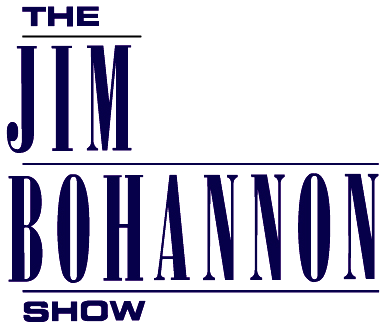"Who Ya Gonna Call?”: CLQ
Okay, it’s officially a crisis. Doors on the executive floor are slamming shut. The CEO, chief counsel, group of senior managers and some lawyerly-looking types are huddled in the board room while the breakfast coffee turns cold.
It’s a major screw-up. It’s a rogue trader or regional sales manager. It’s the bad stuff that somehow got into the grain bins. It’s what somebody forgot to tell somebody who forgot to tell somebody, or worse, what somebody was afraid to tell.
You’re this CEO. You call your COO, the chief counsel and your spouse. It’s going be a long night, maybe a long weekend. And God knows what you’ll see on CNBC on Monday morning. It could be a long, long quarter. Somebody will call your team from McKinsey-Bain-BCG. And somebody will call your PR agency. They have that woman who was in the White House for those bimbo or ISIS or interest rate explosions. If you absolutely have to, you’ll call Charlie or Madeline on the Board.
You put the same old team together. But you expect different results. Einstein would say that constitutes crazy behavior. Still, how can you try something different with stakes as high as these? This is no time for improvising.
“Who ya gonna call?” The Ghostbusters are long gone. There must be somebody out there with a better and different approach. Actually, we bet there is somebody in there. There are people in your company ideally suited not just to manage this crisis, but to solve it. It’s too bad you haven’t already identified them and prepared them for this, like a Navy Seal team.
Who the hell are they? They are people with a high “Change-Leadership Quotient” or “CLQ.” They are only a little smarter than the average rising management-bound employees. But they are more disciplined, creative and ambitious. And they are chafing under the leadership of their current managers. These Change-Leaders are probably a year or so away from bolting from your company to start their own (the “disloyal bastards,” as you’ll call them then). Meanwhile, they just might be able to turn this ugly situation around.
If you’ve read our stuff, you know the term “Change-Leaders.” That’s the category of companies and leaders we identified years ago in our work with Steven Jobs and Mike Murray at Apple. And today, it is a remarkably relevant concept—borrowed from the insurgent political campaigns we’ve done and continue to do. Talk about crisis: big-time campaigns present a new reality every day. To succeed, you must be what Alabama’s legendary coach Bear Bryant wanted in his football players: “Mobile, agile and hostile.”
Today, change itself is changing: In fact, change is in control of the dialogue in your markets and probably in your company. Leading change is the best and only way to win. That’s why this model is so ripe and relevant. And that’s why Change-Leaders do well in today’s crises—because they are:
• Win-oriented: They want unequivocal results, not just results. All their lives, they have resented plastic participation trophies.
• Difference-focused: These people care less about performance reviews than they do about results and breakthroughs. They want to make a difference.
• Future-driven: They don’t focus on heritage or expect the best strategy to come from last year’s crisis management manual. They are vision-driven, working toward a better-world goal. They want to be a part of something great.
• Informal and Heretical: To these people, corporate bureaucracy provides nothing but an unending colonoscopy.
• Change-focused: They love it. Others fear it. To others, change is threatening. So they fear it and fight against it. But, to Change-Leaders, change means opportunity. And they know every crisis presents opportunity for somebody.
The crisis war-room is kind of like the “safe place” where these people mentally go to calm their nerves. In chaos, they can create control. They are the most important unrealized assets your company has. Oh, sure, they’re part of your future leadership. You already know that. They perform. But they could do a lot more, and do it now.
Here’s what you should do:
• Identify them. Do some testing for high CLQ. We can show you or your head of HR a template to use. Just do it online. Then compare the results of that testing with the perceptions of people you know better and trust more. Identify six to ten of them; maybe more, depending on the size of your organization.
• Gather them. Bring one or two of them into any key senior strategic meeting. Rotate that opportunity among the identified Change-Leaders.
• JFK did this when he reinvented the National Security Council and formed the EXCOMM for the Cuban Missile Crisis. He didn’t bring those young Turks in for career development. The fate of the world was hanging in the balance. He brought them in to challenge traditional or conventional answers provided by the usual suspects from the White House, Pentagon or State Department.
Get your Change-Leaders used to the feeling of these high altitude meetings. Make sure to ask their opinions, inside and outside the meeting. They may be a little reluctant at first to speak up around the brass. Make sure they know these sessions are unplugged. Make sure everybody knows it.
• Focus them. Allow them to develop a minority report, an alternative strategy, or suggest an alternative set of tactics to execute the consensus strategy. Give them an impossible deadline to produce these reports in a big hurry.
• Utilize them. Allow them to provide an offline analysis for your eyes only about how they perceived the process, the people and the result.
• Empower them. For your own learning, develop with their help a set of insurgent strategies for crises of challenge and opportunity—they are both equally important and equally fast moving.
This is how you draw on the value of this rare corporate asset and help develop it at the same time. Also, remember another lesson from politics: loyalty is developed as much by what you ask of people as what you give them. Think of Bernie Sanders’ volunteers slogging through the Iowa snow to urge people to the caucuses. They’d have walked to New Hampshire if he asked them.
It’s likely that our U.S. Army in five years will consist almost entirely of Special Operators. They are the supreme Change-Leaders. They have learned through intense training and honed instincts to become comfortable with discomfort. They are totally goal-focused.
There are special operators in business, too. Like those in the military, they must self-select—but rigorous testing and training identifies and sharpens their unique abilities. Don’t wait for the next crisis to realize you need these Change-Leaders. Identify, gather, focus, utilize and empower them. And then, as Nike says: just do it.
 Romney gets personal, more likable
Romney gets personal, more likable The Point: The Underdog Advantage
The Point: The Underdog Advantage








